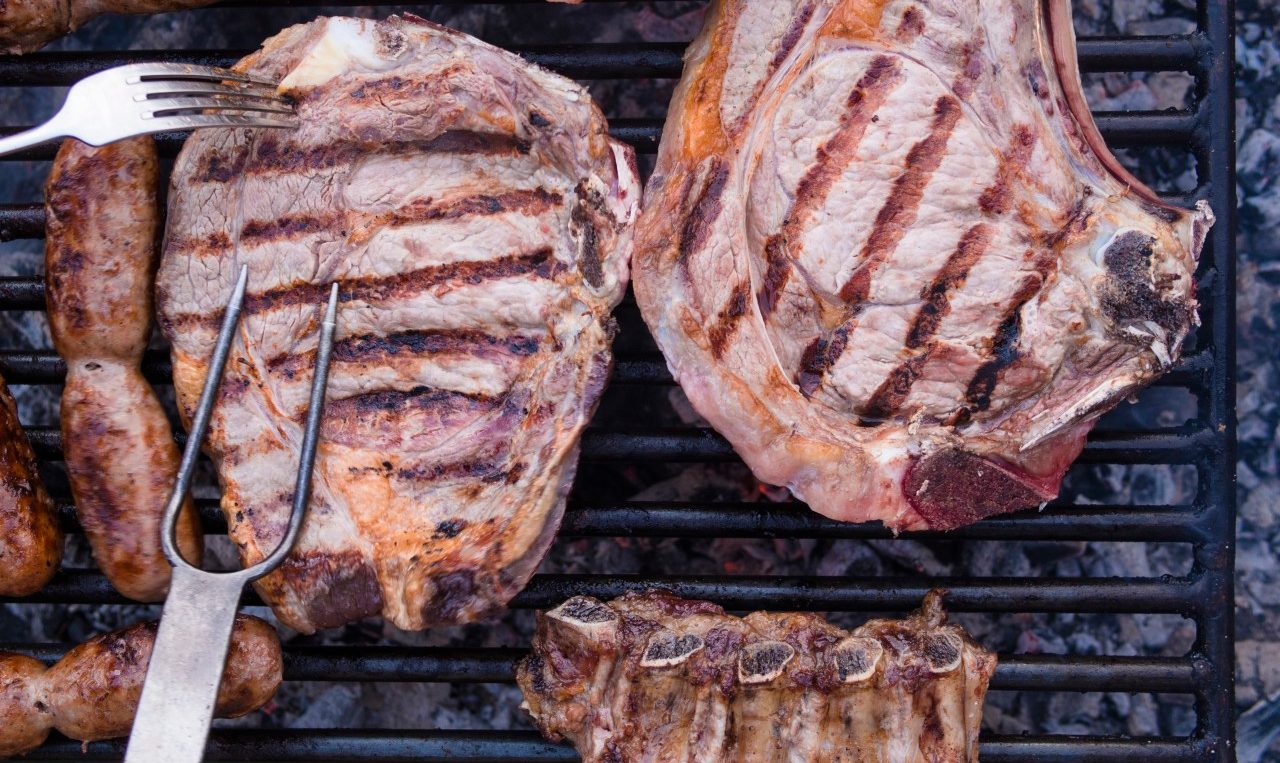Are You Eating the Right Amount of Meat?

Everything in moderation — you’ve heard that before.
Human beings are omnivores — we eat food that comes from both plants and animals. We’ve been eating meat for millions of years and, around the globe, people seem to eat as much meat as they can get.
That said, our primate ancestors probably relied on a scattering of insects in a diet heavy on fruit, leaves, and seeds. Human beings don’t require sausage at breakfast, hot dogs for lunch, and ham for dinner.
Americans have been eating more chicken and leaner red meat since the late 1980s when we got the message about the dangers of fat and cholesterol, but we still typically eat about 85 grams a day of red meat. Every five years, the U.S. Department of Agriculture reconsiders its dietary guidelines, and the 2015 policy is due soon. Experts this year recommended cutting “consumption of red and processed meat, refined grains, added sugars, sodium, and saturated fat; substituting saturated fats with polyunsaturated alternatives; and replacing solid animal fats with non-tropical vegetable oils and nuts.” The meat industry has argued that the panel ignored evidence for the value of lean meat.
Amid the controversy, it’s clear that eating a sausage or a hot dog is worse for your heart than the occasional steak or hamburger, largely because of the extra salt. People at risk of heart disease need to heed warnings against bacon and company: In a 13-year study of more than 34,000 Swedish women aged 43 to 83, those who ate more than 50 grams of processed red meat daily (about a hot-dog), were almost twice as likely to suffer heart failure. Men who consumed more than 75 grams daily were more than twice as likely to die of heart disease. Fresh red meat was okay in this research.
Overconsuming fresh red meat poses other dangers, but you have to eat a lot of it for the effect to show up in studies. For example, a meta-analysis of nine studies found that the risk of type 2 diabetes rose by 19 percent for each 100-gram a day increase of fresh red meat and by 51 percent for each 50-gram a day increase of processed meat. Red meat, both processed and fresh, has also been linked to more frequent strokes and colorectal cancer.
The ideal balance between animal protein and other calories depends in part on your age. Middle-aged people should keep track of their portions. In a large study over 18 years, people ages 50 to 65 who said they they got 20 percent or more of their daily calories from animal protein were more likely to die of any cause, and four times more likely to die of cancer or diabetes. But over the age of 65, eating that much protein cut their cancer risk. Other research shows that meat consumption can help protect seniors from losing muscle strength and breaking their bones if they fall.
What do you say when your teen turns down your turkey chili, once her favorite dish, and announces that she’s becoming a vegan?
Answer: Vegans who cut out all animal foods, including milk and eggs, have to work harder to meet their nutritional needs. Per serving, meat, poultry, and fish provide more protein than dairy, eggs, legumes, cereals, vegetables, or nuts. Meat is a good source of iron, zinc, selenium, vitamins B12, B6, thiamin, riboflavin, niacin, and potassium. If your daughter ends up short of needed vitamins and minerals, she could develop strong cravings for meat and feel less energetic. Does she also insist on going organic? It might be a good idea, but there’s as yet no strong scientific case.
Updated:
April 09, 2020
Reviewed By:
Janet O’Dell, RN